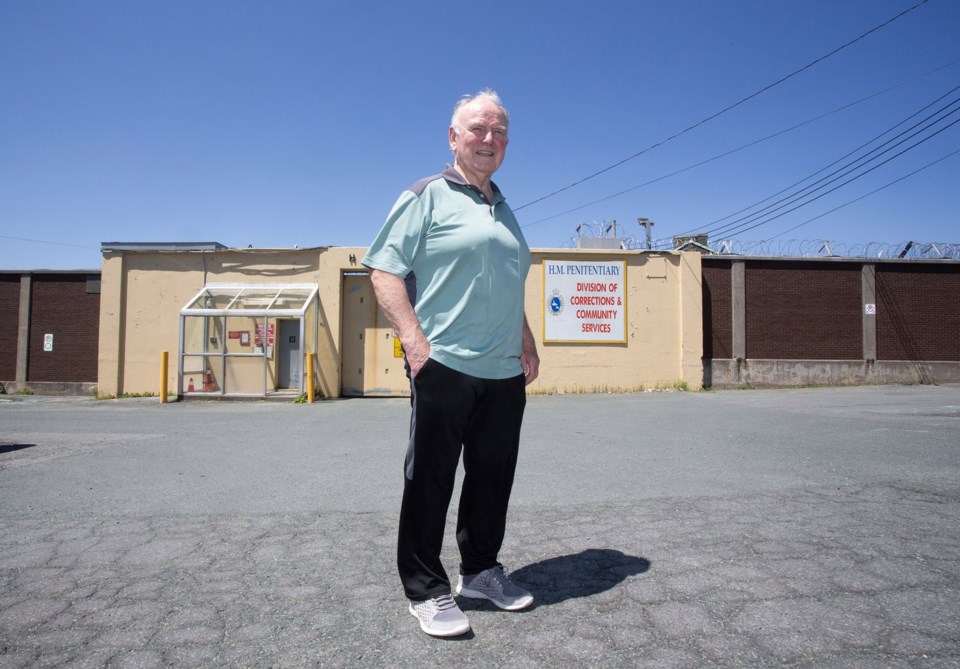ST. JOHN'S, N.L. — More people are being released from Newfoundland and Labrador's largest correctional facility with nowhere to go home to, and experts say housing shortages, unco-ordinated community supports and a high number of inmates on pretrial detention are to blame.
Dan McGettigan, founder and director at rehabilitation non-profit Turnings, says it's increasingly harder to find stable, safe housing for people being released from Her Majesty's Penitentiary in St. John's, N.L. Without it, he said, offenders are more likely to fall back into the habits that landed them in the facility in the first place.
"Public safety is at risk, for the offender and for the community," McGettigan said in a recent interview. "We can address this. We've got enough good people to start to address this … but we've got to be more collaborative."
Figures from Newfoundland and Labrador's Justice Department show that in the first six months of this year, 21 of 146 inmates — more than 14 per cent — were released from Her Majesty's Penitentiary with no listed address.
By comparison, 26 inmates were released from the penitentiary in all of 2019 with no fixed address, according to numbers released through an access-to-information request.
The figures include repeat releases: if an inmate with no address was released more than once in the same time period, they would be counted more than once in the numbers.
McGettigan works with high-risk offenders both inside the Victorian-era jail in St. John's, and after they are released. Landlords have always been hesitant to rent or house offenders, but these days, rents are much higher and the number of affordable or supportive housing units in the city hasn't kept up with demand, he said.
In the meantime, conditions inside the penitentiary have deteriorated, he said. First opened in 1859, the facility is overcrowded and plagued by rodent infestations, blooms of mould and malfunctioning infrastructure. Because of staffing shortages, inmates sometimes go without timely medical or psychiatric care, and they don't get enough rehabilitation supports, he said. Some come out in worse shape than when they went in, which compounds the problems they face trying to build stable lives and accelerates the cycle between incarceration and homelessness, he said.
"These people are coming out angry," McGettigan said. "If we're going to have safer communities, we've got to have safer jails."
Various governments have pledged to replace the jail, and in April, the governing Liberals selected a consortium of companies to lead the replacement. The province's justice department has since set up two mobile trailers at the facility where health care is provided, according to a statement last month.
"The safe release of all inmates from provincial correctional facilities is a priority for the Department of Justice and Public Safety," said the statement. "Prior to a release from custody, an inmate release plan is developed with a classification officer."
In June, Susan Green, programs manager at Her Majesty’s Penitentiary, told a government committee that it used to be "very rare" for someone to leave custody with nowhere to live. And if someone was scheduled to leave and had no place to go, Green said staff were always able to find them stable housing, not just a spot in a shelter.
"The housing situation has changed over the past few years, and the cost of living has changed. And overall, the complexity of issues that are facing a lot of the people that are incarcerated has also changed over the past few years," Green said.
Penitentiary staff have launched several new efforts to make exit plans for inmates, she said, adding, "We're having conversations now in recognition that it is not acceptable to release somebody into homelessness."
Lorelei Roberts, assistant deputy minister of correctional services, told the committee that the high volume of inmates at the facility who are waiting for a trial was complicating the issue. On any given day, up to 82 per cent of penitentiary inmates are on pretrial detention and have no set release date, she said. That makes it difficult to build them an exit plan.
McGettigan said community groups need to work with staff inside the jail to help come up with these plans to find inmates housing, income and proper supports when they are released. And then they need to keep working together to ensure all those things fall into place.
"A lot of people need to be at the table," he said.
This report by The Canadian Press was first published Aug. 6, 2024.
Sarah Smellie, The Canadian Press



